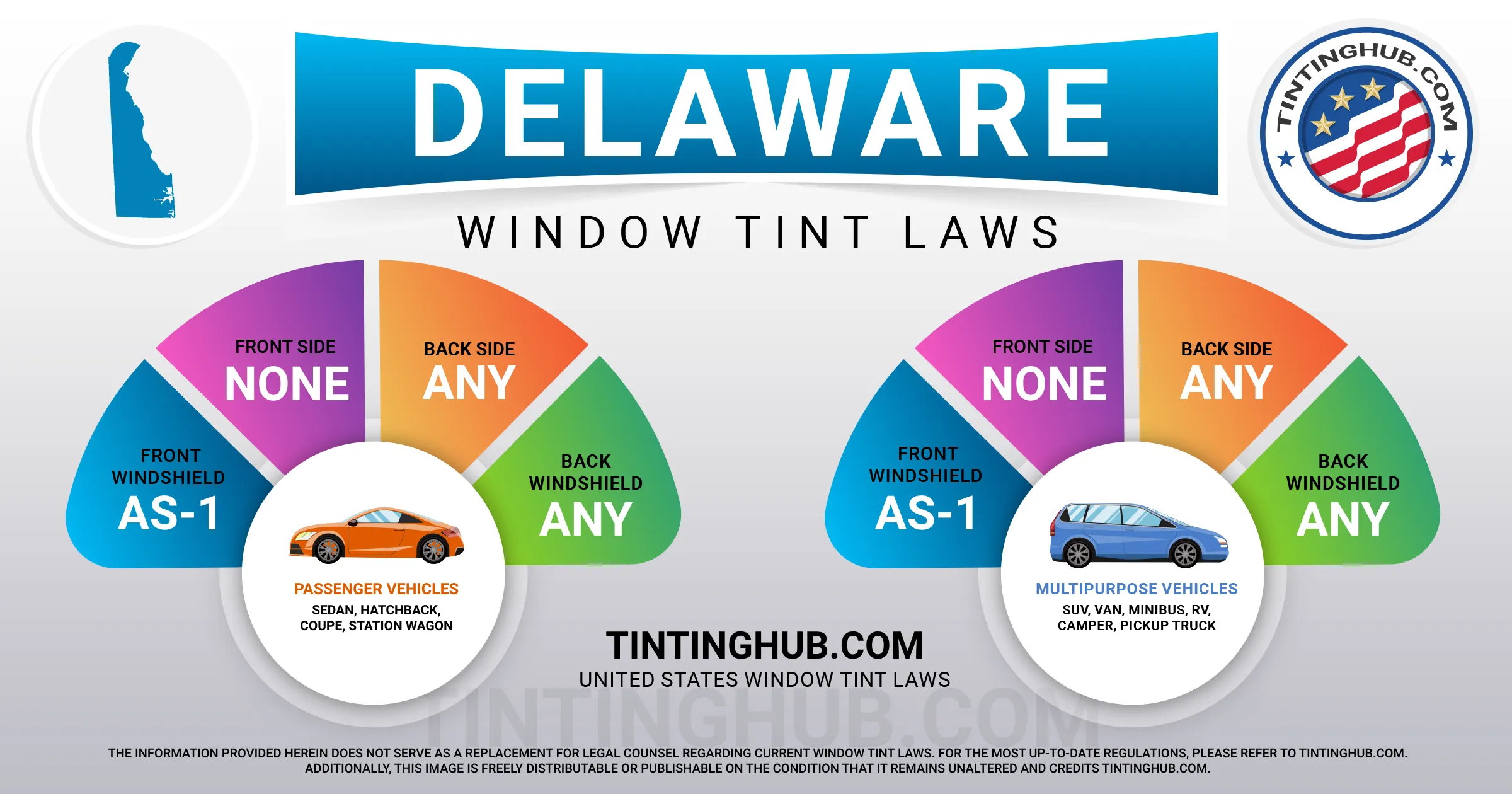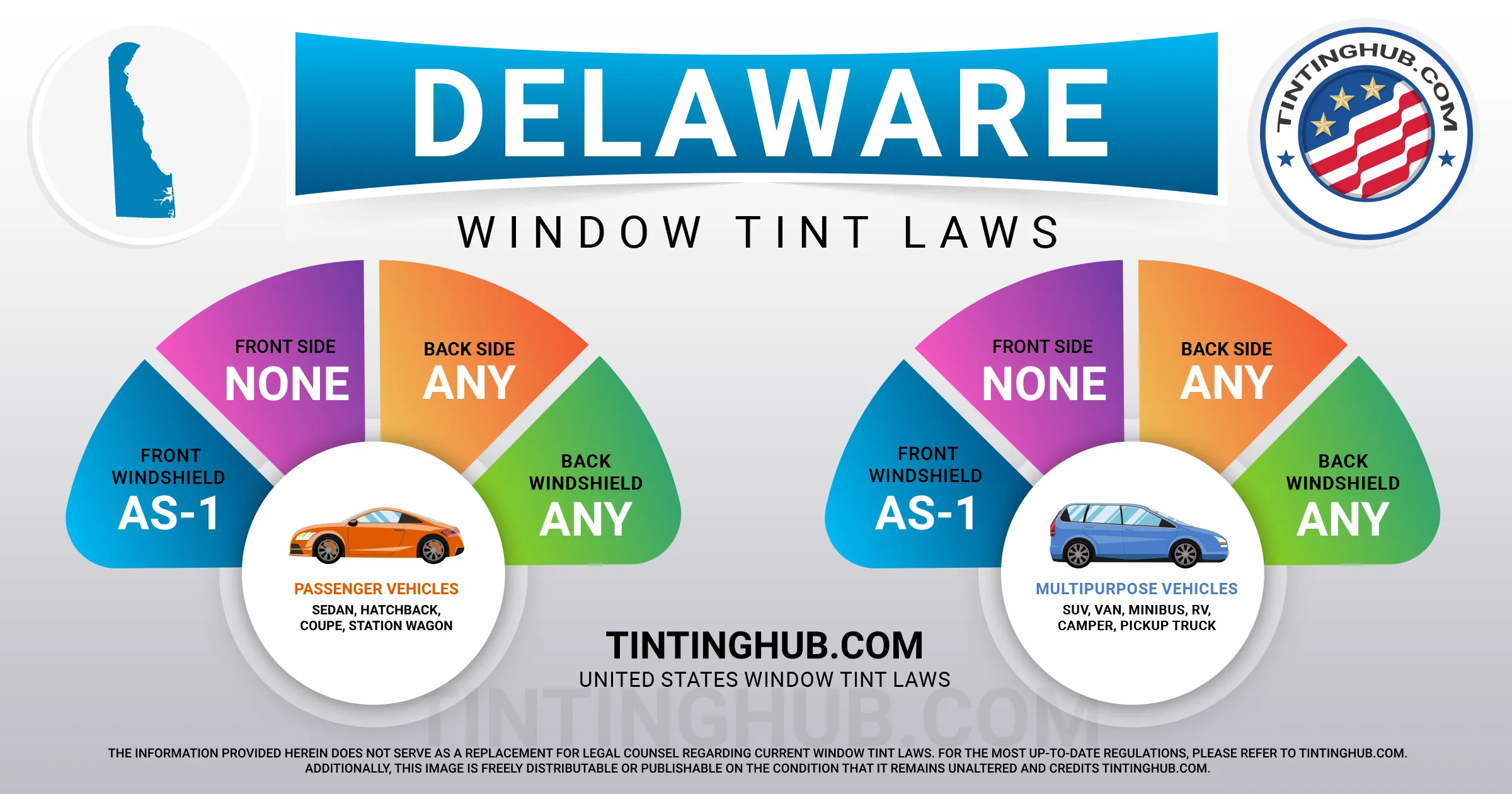Delaware Window Tint Laws (Last Update 2024)

When it comes to your vehicle, window tinting serves both practical and aesthetic purposes.
In Delaware, where car window tinting laws were enacted in 1992, it’s essential to comprehend the regulations to ensure you stay both stylish and within the bounds of the law.

Deciphering Window Tint Darkness
VLT, or Visible Light Transmission, measures the darkness of your window tint, indicating the percentage of visible light that your car windows allow. Delaware, with its specific regulations, distinguishes between sedans and SUVs or vans.
Tint Darkness for Sedans
- Windshield: Non-reflective tint is permissible above the manufacturer’s AS-1 line.
- Front Side Windows: Aftermarket tint is not allowed.
- Back Side Windows: You have the flexibility to choose any level of darkness.
- Rear Window: Similar to back side windows, you can opt for any level of darkness.
Tint Darkness for SUVs and Vans
- Windshield: Non-reflective tint is allowed above the manufacturer’s AS-1 line.
- Front Side Windows: Aftermarket tint is prohibited.
- Back Side Windows: You have the freedom to choose any level of darkness.
- Rear Window: Similar to back side windows, you can opt for any level of darkness.
Delaware does not permit aftermarket tint on front side windows; it allows only factory-installed tint with over 70% VLT.
Examining Window Tint Reflection
Window tinting can reflect incoming light, reducing glare and heat. Delaware’s laws also consider the reflection factor.
Tint Reflection for Sedans
- Front Side Windows: The tint should not have a metallic or mirrored appearance.
- Back Side Windows: Similar to front side windows, there should be no metallic or mirrored appearance.
Tint Reflection for SUVs and Vans
- Front Side Windows: The tint should not have a metallic or mirrored appearance.
- Back Side Windows: Similar to front side windows, there should be no metallic or mirrored appearance.
Additional Delaware Window Tinting Regulations
Delaware has a few other important regulations that you should be aware of:
- Side Mirrors: If the back window is tinted, dual side mirrors are required.
- Restricted Colors: There are no banned colors for window tint.
- Certificates: Film manufacturers are not required to certify the film they sell in Delaware.
- Stickers: To identify legal tinting, a sticker must be placed between the film and the glass on the driver’s side window.
- Medical Exceptions: Delaware allows medical exemptions for special tint. For detailed information on the specific terms of the exemption, please consult your state’s law.
- Penalties: Violations may incur fines ranging from $28.75 to $100.
It’s crucial to keep in mind that interpretations of Delaware’s tinting laws and regulations may vary in different counties or places of residence. Therefore, we always recommend double-checking our information with your local DMV or law enforcement authorities.
Please be aware that we last updated our information about window tint laws in Delaware in 2024.
If you come across any discrepancies or inaccuracies, please do not hesitate to contact us so that we can rectify them. We take pride in being a trusted industry leader, providing accurate window tint laws for your peace of mind.